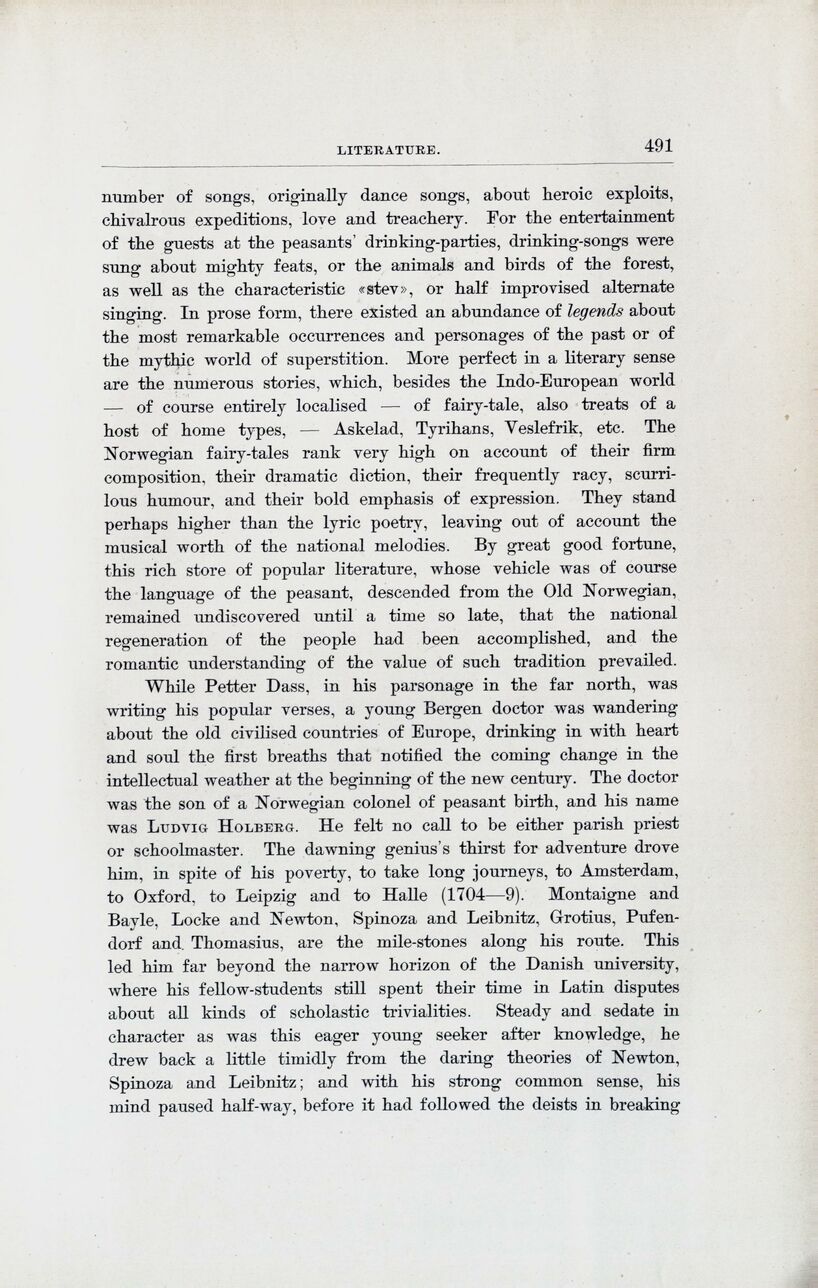
Full resolution (JPEG) - On this page / på denna sida - Literature, by Chr. Brinchmann

<< prev. page << föreg. sida << >> nästa sida >> next page >>
Below is the raw OCR text
from the above scanned image.
Do you see an error? Proofread the page now!
Här nedan syns maskintolkade texten från faksimilbilden ovan.
Ser du något fel? Korrekturläs sidan nu!
This page has been proofread at least once.
(diff)
(history)
Denna sida har korrekturlästs minst en gång.
(skillnad)
(historik)
number of songs, originally dance songs, about heroic exploits,
chivalrous expeditions, love and treachery. For the entertainment
of the guests at the peasants drinking-parties, drinking-songs were
sung about mighty feats, or the animals and birds of the forest,
as well as the characteristic «stev», or half improvised alternate
singing. In prose form, there existed an abundance of legends about
the most remarkable occurrences and personages of the past or of
the mythic world of superstition. More perfect in a literary sense
are the numerous stories, which, besides the Indo-European world
— of course entirely localised — of fairy-tale, also treats of a
host of home types, — Askelad, Tyrihans, Veslefrik, etc. The
Norwegian fairy-tales rank very high on account of their firm
composition, their dramatic diction, their frequently racy,
scurrilous humour, and their bold emphasis of expression. They stand
perhaps higher than the lyric poetry, leaving out of account the
musical worth of the national melodies. By great good fortune,
this rich store of popular literature, whose vehicle was of course
the language of the peasant, descended from the Old Norwegian,
remained undiscovered until a time so late, that the national
regeneration of the people had been accomplished, and the
romantic understanding of the value of such tradition prevailed.
While Petter Dass, in his parsonage in the far north, was
writing his popular verses, a young Bergen doctor was wandering
about the old civilised countries of Europe, drinking in with heart
and soul the first breaths that notified the coming change in the
intellectual weather at the beginning of the new century. The doctor
was the son of a Norwegian colonel of peasant birth, and his name
was Ludvig Holberg. He felt no call to be either parish priest
or schoolmaster. The dawning genius’s thirst for adventure drove
him. in spite of his poverty, to take long journeys, to Amsterdam,
to Oxford, to Leipzig and to Halle (1704—9). Montaigne and
Bayle, Locke and Newton, Spinoza and Leibnitz, Grotius,
Pufendorf and Thomasius, are the mile-stones along his route. This
led him far beyond the narrow horizon of the Danish university,
where his fellow-students still spent their time in Latin disputes
about all kinds of scholastic trivialities. Steady and sedate in
character as was this eager young seeker after knowledge, he
drew back a little timidly from the daring theories of Newton,
Spinoza and Leibnitz; and with his strong common sense, his
mind paused half-way, before it had followed the deists in breaking
<< prev. page << föreg. sida << >> nästa sida >> next page >>